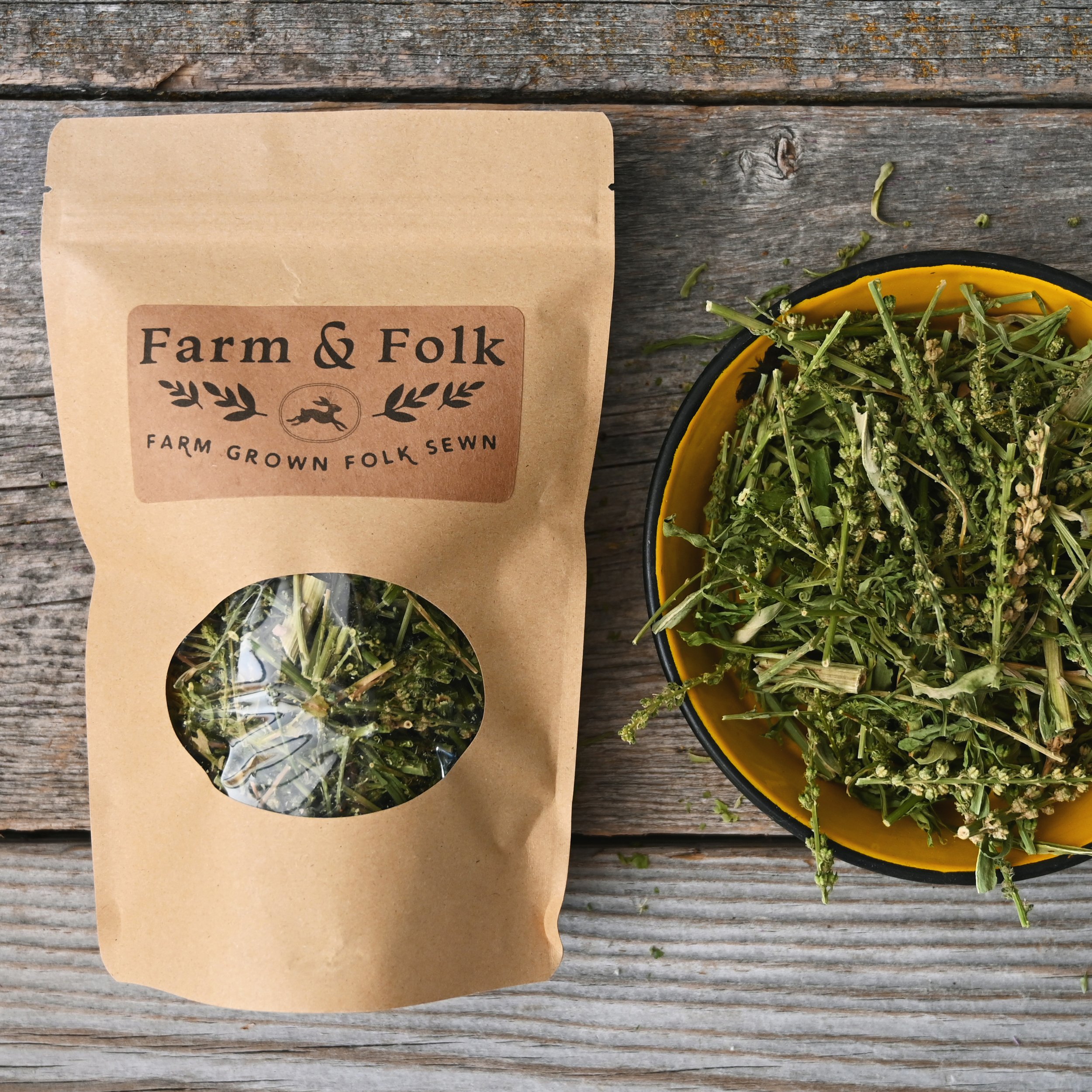Natural Dye Cultivation Series: Weld
Weld has been used as a natural dye since pre-historic times. It produces very happy and beautiful, colorfast shades of clear-sunshiny-yellows. The shades weld produces have become some of my favorites and show up in almost every textile I make. I’ve found it to be very easy to grow.
Quick facts:
Biennial
Germination time: 1-2 weeks
Seed planting depth: plant on surface
Light: full to part sun
Spacing: 18”
Days to harvest: 2nd summer
Height & width: 4’ x 3’
CULTIVATION
Weld seeds are tiny making it a bit tricky to get them started. The key is to begin the seeds indoors in starter trays at least 8 weeks before your average last frost date. Put the trays under lights or in a sunny window, and use heated propagation mats if you have them. The seeds require light to germinate so sow them directly on the soil surface. Use a spray bottle to water the seeds in rather than pouring water over them. Cover the seed tray with a dome to keep moisture in and prevent the seeds from drying out. Sow several seeds per cell and after the seedlings emerge thin them to one per cell. The seedlings soon become little rosettes. Once the danger of frost has passed gently transfer the rosettes out to the garden doing your best not to disturb their sensitive roots.
Here in the southwest, my weld transplants take quite a while to acclimate once transplanted. I don’t notice much growth during the first few weeks after transplanting, but once they do finally acclimate and begin to grow they grow quickly. I imagine if you live in a region that receives a good amount of cloudy days and rain, your weld seedlings may be a lot quicker to thrive.
Weld is a biennial so the plant will remain a rosette the first year and the second year it will vigorously grow upright forming several stalks of flowers. Despite it being a biennial, I consistently have several plants that flower during their first year.
Harvest
Harvest the flowering stalks shortly after they begin to blossom when about 1/3 of the flowers on the stalks have bloomed. I string the stalks up with jute or hemp twine and hang them upside down from the barn rafters to dry. A dye bath can be made with fresh stalks, but the dried plant matter can be stored and used throughout the year. Once completely dry, I use garden clippers to trim the stalks into 1/2” pieces, then store them in an airtight container.
If you’re interested in learning how to naturally dye with weld, I wrote a blog post that you can reference here. Be sure to check out all the posts in this natural dye cultivation series (I’m working on several more) and feel free to ask questions in the comments below. Below is a link to our weld seed and be sure to check out all the other dye plant seeds and dyestuffs we offer as well!





